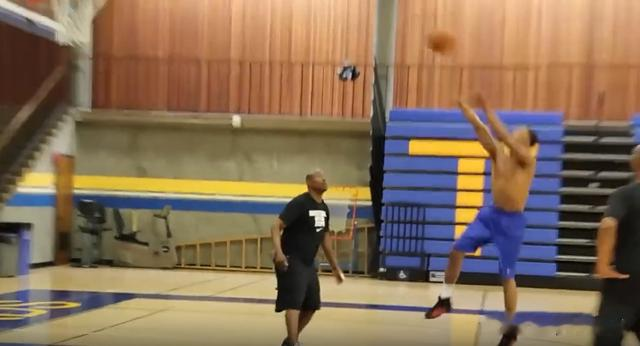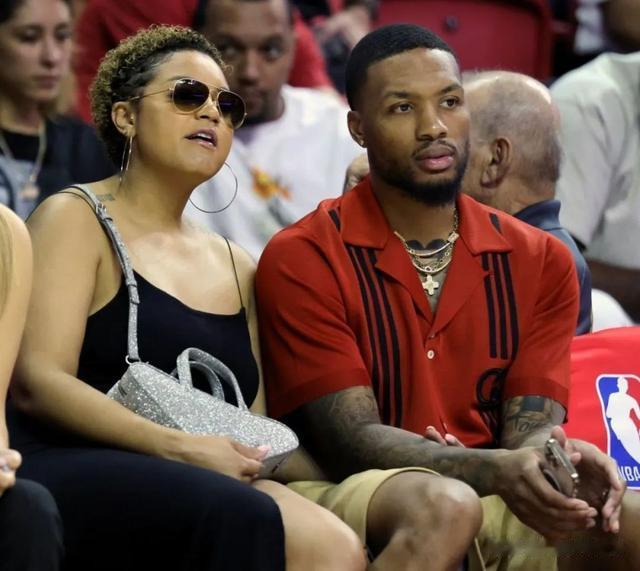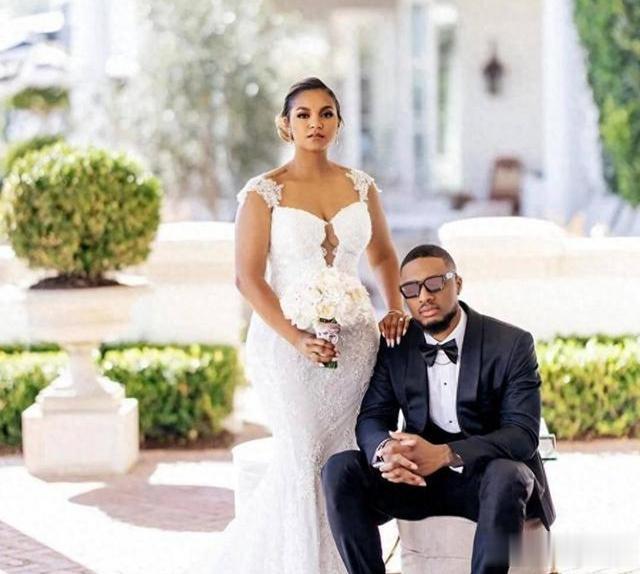He is the big good man in the NBA. After winning the NBA Cup recently, he distributed the 500,000prizemoneytothestaffandtrainingteam.Hehasalsogivengiftstohisteammatesmanytimes,participatedincommunitycareactivitiestohelpmanypeople,andatthesametimeusedhisinfluenceinthebasketballandrapworldstohelptheunderprivilegedspeakoutandfightforbetterrightsforthem.Atthesametime,heisalsoagoodman.Heearned329 million in the NBA but did not have any scandals. He is full of positive energy on and off the court, but he was betrayed by his wife and had to divorce. He is Damian Lillard, who is constantly moving forward in the face of doubts and breaking them.

Born on July 15, 1990, in Oakland, California, one of the cities with the highest crime rates in the United States, Lillard grew up in a place filled with drugs, guns, and crimes. However, compared to most NBA players, he was relatively lucky. He was born into a happy and complete family, always accompanied by his parents. Under their strict education, Lillard never got involved in bad habits. When Lillard wanted to play basketball, his parents fully supported him, even spending money to send him to basketball training classes.

But most of the time in life, you can't have both fish and bear paws. Some NBA players have excellent physical talents, but they didn't have good conditions to practice when they were young. Lillard had good conditions to practice, but he didn't have outstanding physical talents. His basketball skills became more and more refined, but his height grew very slowly. By the time he was in high school, he was only 1.65 meters tall, which made it difficult for him during his high school years.

In his freshman year, Lillard was the starting player for Arroyo High School. However, after the season ended, many parents were dissatisfied that this little guy always held onto a lot of ball possession. They collectively complained to the principal's office, causing the coach to be fired, and Lillard had no choice but to transfer to St. Joseph Notre Dame High School.

However, due to his thin physique, he couldn't meet the coach's defensive requirements and didn't get enough playing time. Considering his future, he transferred to Oakland High School after his sophomore year, where he met a coach who trusted him - Orlando Watkins. Encouraged by the coach, Lillard made rapid progress, averaging 19.4 points in his junior year and reaching new heights in his senior year with an average of 22.4 points and 5.2 assists. Moreover, his height grew to 1.80 meters. Just as he thought his future was bright, he was hit with a cold shower.

After high school, he was only rated as a two-star high school student and did not receive a scholarship offer from any top basketball school. He could only join Weber State University. At that time, he was holding a breath, determined to make those who looked down on him pay the price.

In his freshman season, he scored as high as 27 points in a single game, averaging 11.5 points, 3.9 rebounds, 2.9 assists, and 1.1 steals per game. He was eventually elected the best rookie of the Big Sky Conference and selected into the first team of the Big Sky Conference's annual best lineup. By his sophomore season, he had become the team's top scorer, scoring in double figures in 29 out of 31 games, averaging 19.9 points per game, and sending out 3.6 assists per game. At that time, he had grown into an excellent guard who could attack and pass.

Just as everything was developing in a good direction, he missed the entire junior season due to injury. Fortunately, not only did missing a year not cause his competitive state to decline, but it actually became even better. After returning, he could average 24.5 points, 5 rebounds, 4 assists, and 1.5 steals per game, with a shooting percentage of 46.7% and a three-point percentage of 40.9%, ranking second in the nation in scoring average.

According to NCAA regulations, he could have played another season in the NCAA before participating in the NBA draft due to his injury absence. However, because of his outstanding performance, he attracted enough attention from NBA scouts, so he decided to sign up for the 2012 NBA draft. In the NBA league that values physical talent the most, he was unsure if he could be selected in a high position. The only thing he could do was to show off all his skills during the trial, making up for the lack of physical talent with technique.

I think anyone who has seen Lillard's trial video will be shocked. At the beginning of the trial, he first used a rope ladder to do several sets of warm-up exercises. His steps were fast and flexible. After warming up, the intensity suddenly increased by a level. He demonstrated defensive sliding steps while wearing a resistance band around his waist. He first showed his lateral movement speed, then showed his defensive ability while retreating and making small lateral movements, and finally practiced sliding around obstacles near the center circle to simulate how to defend the ball carrier when someone is setting a pick. Just watching it makes people feel tired.

After the sliding demonstration, he also listened to the trainer's orders to shoot or dunk while wearing a resistance band. He needed to complete pull-up jump shots, explosive shots, and sprint dunks at five points within the three-point line. When his body was most exhausted, Lillard could almost always hit the target, with a terrifyingly stable shooting ability.

The next training was even more insane. Lillard needed to carry a weighted ball and move left and right along the baseline, then retreat to the center line to receive the ball, accelerate dribbling past the trainer to dunk at the basket, then dribble and accelerate to the opposite basket for a layup, and then push the ball to the three-point line to complete a jump shot. He needed to complete this set of training three times.

After a short break, he had to quickly move to receive the ball and shoot, trying to simulate how to score under the biting defense. Lillard was accurate from all angles. Then he showed his ability to dribble from the backcourt to the three-point line and shoot, as well as his ability to run from the backcourt to receive the ball and shoot three-pointers without the ball. Even under heavy physical exertion, he could still shoot accurately from beyond the three-point line.

In the last set of training, he quickly ran to receive the ball, quickly changed direction or dribbled between his legs to shake off the defender and shoot. He needed to complete the same technical actions at five points. Finally, Lillard could still complete five sets of shuttle runs with heavy steps, showing his strong mental willpower.

It is not an exaggeration to say that Lillard was the technically best player among that batch of draft picks at that time. Therefore, despite being only 1.85 meters tall with shoes on, he eventually became the sixth pick. When some people questioned whether his body could adapt to the intensity of NBA games, he delivered a double-double of 23 points and 11 assists in his first game. At the end of the season, he averaged 19 points, 3.1 rebounds, and 6.5 assists, taking home the Rookie of the Year award.

By his second season, Lillard was already averaging 20.7 points and dishing out 5.6 assists, successfully entering the All-Star lineup and gaining the favor of sports giant Adidas, securing a $100 million endorsement contract over 10 years. After that, Lillard continued to grow, putting up impressive numbers multiple times in the regular season, being selected to the second and third teams of the All-NBA multiple times, and even being selected to the first team once. However, he always fell short in the playoffs, which led to many doubts when he was named one of the NBA's 75 greatest players of all time.

However, the doubts did not affect his earning ability. He stayed with the Blazers for 11 years, leading the team to the playoffs eight times and becoming a totem in Portland. The team was not stingy in renewing his contract. When he was in the third year of his rookie contract, the Blazers offered him a five-year, 120millionearlyrenewalcontract.In2019,theteamofferedhimafour−year,194 million maximum salary renewal contract. In the summer of 2022, both sides signed another two-year, $122 million maximum salary contract.

Originally, both sides were going to cooperate until the summer of 2027, but the Blazers, who were getting worse year by year, decided to rebuild and sent Lillard to the Bucks, who had a chance to win the championship. When Lillard left Portland, where he had been for 11 years, and landed in Milwaukee, the fans who welcomed him found that he was alone with two children, without seeing his wife. What was even more unexpected was that a month later, Lillard filed for divorce from his wife, Kayla Hansen, looking back on the years they spent together, which was heart-wrenching.

Kayla was born in Nevada, USA in 1991. Her father is a famous real estate developer in the local area. When she fell in love with Lillard during her university days, her parents strongly opposed this relationship with a huge difference in status. In order to get her parents' approval to be with Lillard, she even chose to
